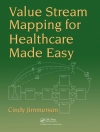Provides expert guidance on the development of a program of research
This is the first resource to provide graduate nursing students, students in other health sciences, and novice researchers with the tools and perspective to develop their own programs of research. Grounded in the author’s 30 years of experience as a highly esteemed nurse researcher, the book guides nurses step by step through all aspects of program development. It underscores the importance of doing research that is knowledge driven and not limited to a particular method, and describes the characteristics of a successful research program and how to achieve it. It stresses the need for both qualitative and quantitative research methods to develop a valuable program of research. With a major focus on planning for sequential studies and describing potential pathways of a research trajectory, the book addresses options and timing of quantitative, qualitative, and mixed-method research designs, along with time-management strategies.
Numerous examples of various types of nursing research programs provide insight into potential research paths, and information from the author’s own long-term research on postpartum mood and anxiety disorders is used to illustrate concepts throughout the book. The text also includes suggestions for sustaining a research trajectory and provides detailed strategies for publishing successive studies. With an eye to exploring every possible research avenue, the book addresses interdisciplinary collaborative research and international research collaboration.
Key Features:
- Provides specific steps for developing a successful research program in nursing and the health sciences
- Demonstrates how to use both quantitative and qualitative research methods to produce a knowledge-driven research trajectory
- Provides time-management strategies for research productivity
- Explains how to plan for sequential studies and sustain a successful research trajectory
- Uses concrete examples of research programs, including the author’s own programs on postpartum mood and anxiety disorders
İçerik tablosu
Contents
Preface
1. Developing a Program of Research
Definitions of a Program of Research
Who Does a Program of Research?
Metaphors Used to Describe Research Programs
My Program of Research
2. Starting a Program of Research
The Road Not Taken
The Calf-Path
Tools Needed for Developing a Program of Research
3. Planning Sequential Studies
The Long and Winding Path of the Research Program on Postpartum Mood and Anxiety Disorders
Benefits of Meta-Analyses and Metasyntheses in Planning Sequential Studies
Guidance in Planning Sequential Studies With Special Populations
4. Options Available for Developing a Research Program
Qualitative Research Can be a Gold Mine in Developing Programs of Research
Mixed Methods as an Option in Research Programs
5. Sustaining a Program of Research
Characteristics of a Successful Program of Research and Steps to Achieve it
Interdisciplinary Collaborative Research
Exemplars of Nurse Researchers’ Collaborative Research Teams
Qualitative Interdisciplinary Collaboration
International Research Collaboration
6. Other Nurse Researchers’ Programs of Research
Pamela Hinds’s Program of Research in Pediatric Oncology
Joanne Hall’s Program of Research With Marginalized Groups
Janice Morse’s Program of Research on Suffering
Karin Olson’s Program of Research on Fatigue
Ruth Mc Corkle’s Program of Research in Oncology
7. Publishing Your Program of Research
Qualitative Research
Mixed-Methods Research
Avoiding Duplicate Publication
Deciding Where to Publish
Epilogue
Index
Yazar hakkında
Cheryl Tatano Beck, DNSc, CNM, FAAN, is a distinguished professor at the University of Connecticut School of Nursing. She also has a joint appointment in the Department of Obstetrics and Gynecology at the School of Medicine.












